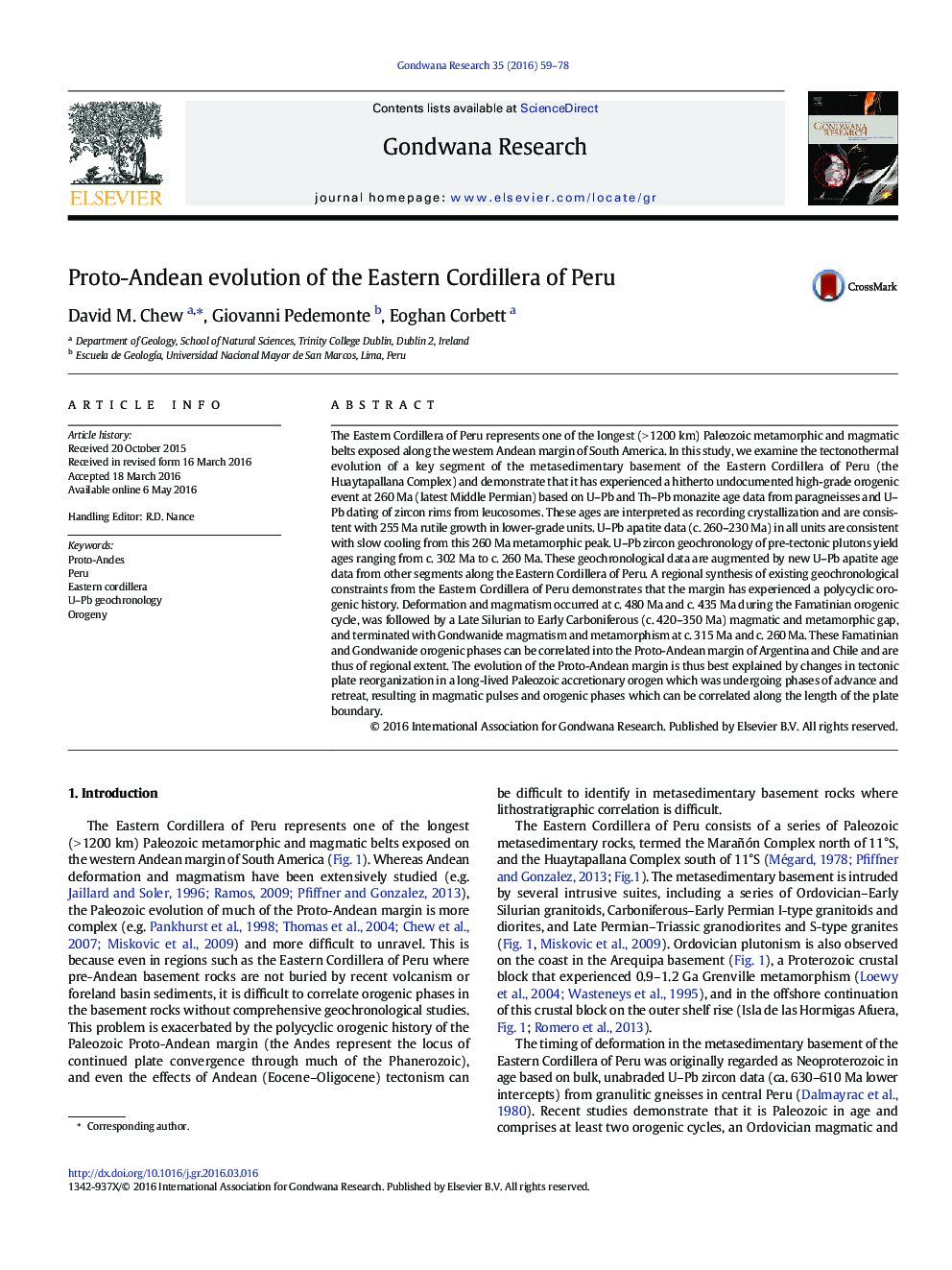| کد مقاله | کد نشریه | سال انتشار | مقاله انگلیسی | نسخه تمام متن |
|---|---|---|---|---|
| 4726588 | 1640136 | 2016 | 20 صفحه PDF | دانلود رایگان |
• New evidence of high-grade orogeny in the Eastern Cordillera of Peru at c. 260 Ma.
• Proto-Andean margin has experienced polycyclic (Famatinian, Gondwanide) orogenesis.
• Implies phases of advance and retreat in a long-lived Paleozoic accretionary orogen.
The Eastern Cordillera of Peru represents one of the longest (> 1200 km) Paleozoic metamorphic and magmatic belts exposed along the western Andean margin of South America. In this study, we examine the tectonothermal evolution of a key segment of the metasedimentary basement of the Eastern Cordillera of Peru (the Huaytapallana Complex) and demonstrate that it has experienced a hitherto undocumented high-grade orogenic event at 260 Ma (latest Middle Permian) based on U–Pb and Th–Pb monazite age data from paragneisses and U–Pb dating of zircon rims from leucosomes. These ages are interpreted as recording crystallization and are consistent with 255 Ma rutile growth in lower-grade units. U–Pb apatite data (c. 260–230 Ma) in all units are consistent with slow cooling from this 260 Ma metamorphic peak. U–Pb zircon geochronology of pre-tectonic plutons yield ages ranging from c. 302 Ma to c. 260 Ma. These geochronological data are augmented by new U–Pb apatite age data from other segments along the Eastern Cordillera of Peru. A regional synthesis of existing geochronological constraints from the Eastern Cordillera of Peru demonstrates that the margin has experienced a polycyclic orogenic history. Deformation and magmatism occurred at c. 480 Ma and c. 435 Ma during the Famatinian orogenic cycle, was followed by a Late Silurian to Early Carboniferous (c. 420–350 Ma) magmatic and metamorphic gap, and terminated with Gondwanide magmatism and metamorphism at c. 315 Ma and c. 260 Ma. These Famatinian and Gondwanide orogenic phases can be correlated into the Proto-Andean margin of Argentina and Chile and are thus of regional extent. The evolution of the Proto-Andean margin is thus best explained by changes in tectonic plate reorganization in a long-lived Paleozoic accretionary orogen which was undergoing phases of advance and retreat, resulting in magmatic pulses and orogenic phases which can be correlated along the length of the plate boundary.
Figure optionsDownload as PowerPoint slide
Journal: Gondwana Research - Volume 35, July 2016, Pages 59–78
